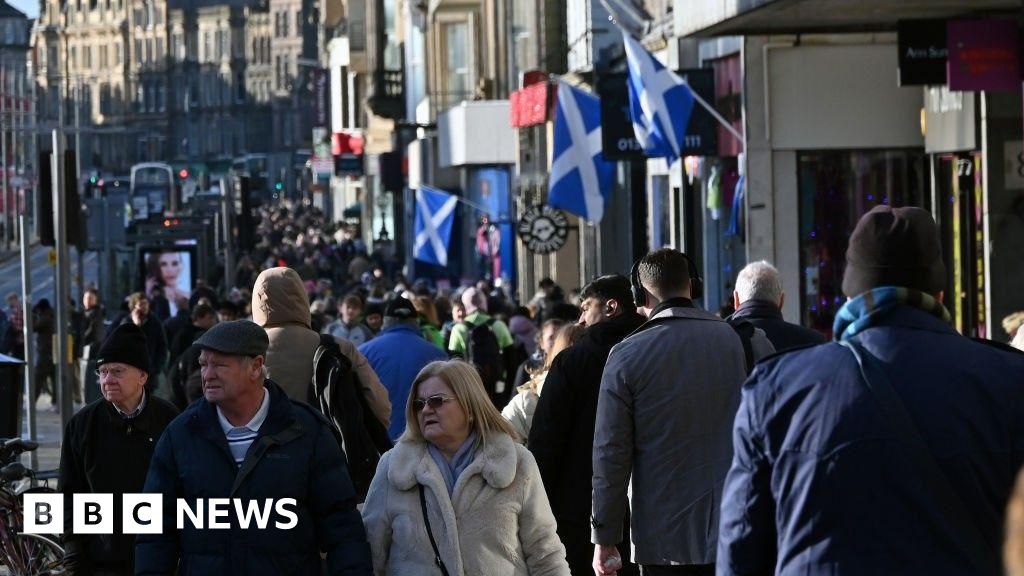World
The wider lessons of Scotland’s political turmoil

HUMZA YOUSAF announced his resignation as Scotland’s first minister on April 29th after a mere 13 months (or 8.1 Liz Trusses) in office. Four days earlier he had unilaterally terminated a coalition agreement with the Scottish Green Party, claiming that this would free the Scottish National Party (SNP) to run an unencumbered minority government. The Greens promptly said they would support a vote of no confidence in him, and when it became clear that Mr Yousaf would struggle to survive, he fell on his sword.
Mr Yousaf’s departure is the latest in a string of setbacks for a party that once seemed to exert complete command over Scottish politics. That is important for Britain—not least because the path to Downing Street for Sir Keir Starmer, the Labour leader, becomes easier if his party does well in Scotland. But it also holds wider lessons: that nationalism requires fuel to survive; that climate politics menaces the stability of governments; and that populism is not policy.
The first lesson is how fragile heterogeneous nationalist movements can be. Think back to the formation of the SNP-Green coalition in 2021, which provided Nicola Sturgeon, the SNP’s then-leader, with a pro-independence majority in Holyrood, the Scottish parliament. These were heady days: the chaotic tenure of Boris Johnson as Britain’s prime minister, the weakness of the Labour Party and the charisma of Ms Sturgeon made SNP dominance seem the natural order of things and separation only a matter of time.
Momentum has since stalled. That is partly because of Ms Sturgeon’s sudden exit as SNP leader last year and a police investigation into her party’s finances (Peter Murrell, her husband and the SNP’s former chief executive, has been charged in connection with embezzlement; she denies any wrongdoing). But the bigger problem was the finding by the Supreme Court in 2022 that Scotland had no right to hold a referendum unilaterally. Nationalism provided the glue for a sprawling coalition of urban progressive activists and rural social conservatives. Without a clear path to independence, fissures became much harder to paper over.
One of those fissures, and the proximate cause of the coalition’s collapse, was the Scottish government’s abandonment of a target to cut carbon emissions by 75% by 2030. The Greens were outraged; if Mr Yousaf had not abrogated the coalition agreement, their members might have done it for him. This is the second lesson: the politics of the climate transition is going to get harder for everyone. Governments around the world have signed up to decarbonisation targets that risk alienating homeowners and car drivers, farmers and employees of fossil-fuel companies. For all its talk of being a beacon for tackling climate change, the Scottish government had slipped on its targets for eight of the past 12 years. Achieving the green transition requires a level of dexterity that will test more able politicians than Mr Yousaf.
The third lesson concerns the difference between campaigning and governing. When Mr Yousaf took office last year, this newspaper concluded that the focus on Scottish independence had amounted to a “holiday from reality”. He opted for another mini-break. Rather than confront his party with the constitutional fact that the path to independence was blocked, the self-styled “first activist” insisted that winning a majority of Scottish seats at the next general election would amount to a mandate to negotiate divorce. Even as the coalition was collapsing, his administration published a policy paper on the management of Scottish prisons after independence. All the while Scotland’s real problems—a creaking health service, problems in education and, above all, a weakening tax base due to an ageing population—went unattended. Mr Yousaf was an inconsequential leader. But his resignation still tells a story.
© 2023, The Economist Newspaper Limited. All rights reserved. From The Economist, published under licence. The original content can be found on www.economist.com
Continue reading with HT Premium Subscription
Daily E Paper I Premium Articles I Brunch E Magazine I Daily Infographics











